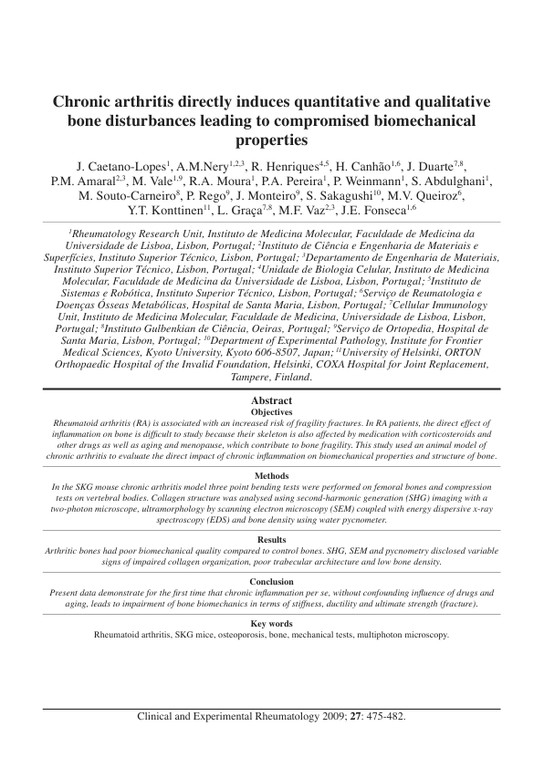Chronic arthritis directly induces quantitative and qualitative bone disturbances leading to compromised biomechanical properties
Paper published in Clinical & Experimental Rheumatology, January 2009

The manuscript by Caetano-Lopes et al. (2009) investigates the impact of chronic inflammation on bone structure and biomechanical properties using the SKG mouse chronic arthritis model. The study found that arthritic bones had poorer biomechanical quality compared to control bones, as evidenced by lower Young's modulus, yield stress, ultimate stress, and energy until ultimate stress in three-point bending tests on femoral bones and compression tests on vertebral bodies. Second-harmonic generation (SHG) imaging, ultramorphology by scanning electron microscopy (SEM) coupled with energy dispersive x-ray spectroscopy (EDS), and bone density measurements using water pycnometry were employed to evaluate the bone structure. The results showed variable signs of impaired collagen organization, poor trabecular architecture, and low bone density. The authors concluded that chronic inflammation per se leads to impairment of bone biomechanics in terms of stiffness, ductility, and ultimate strength (fracture).